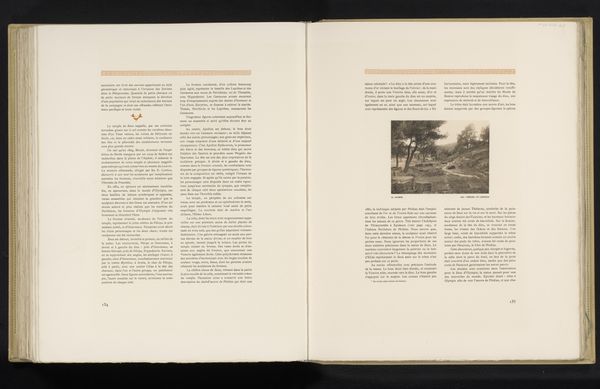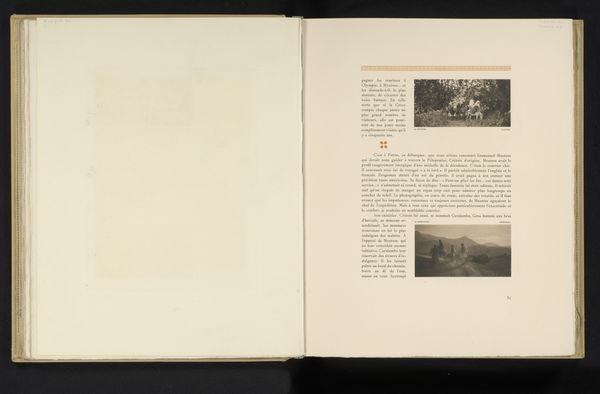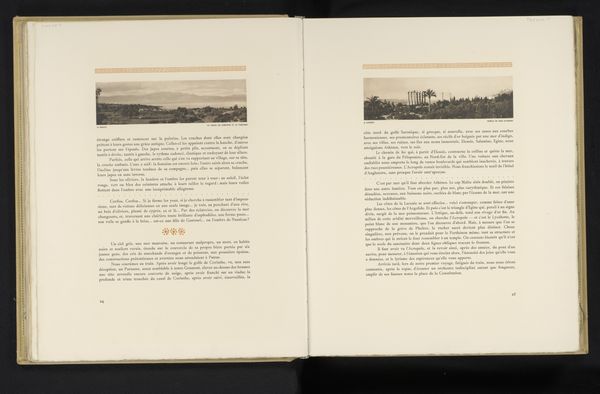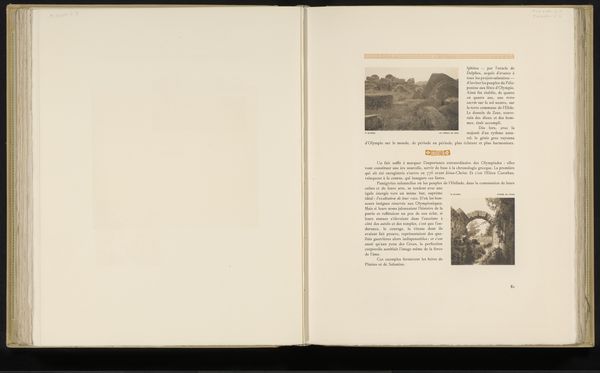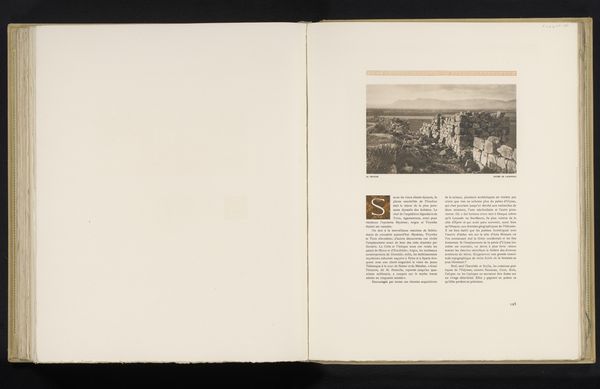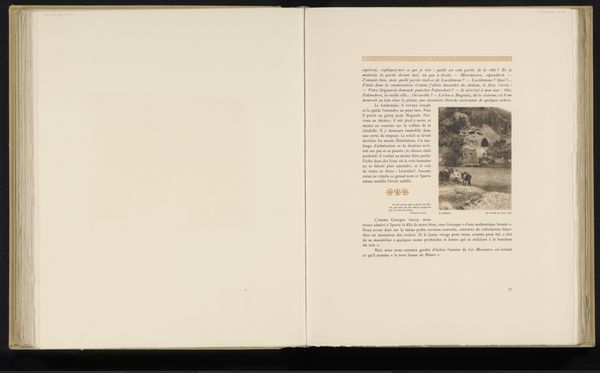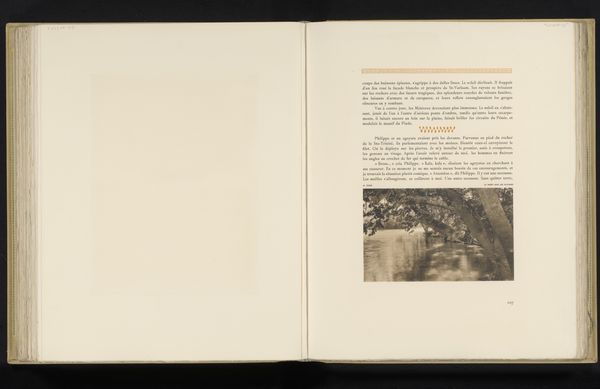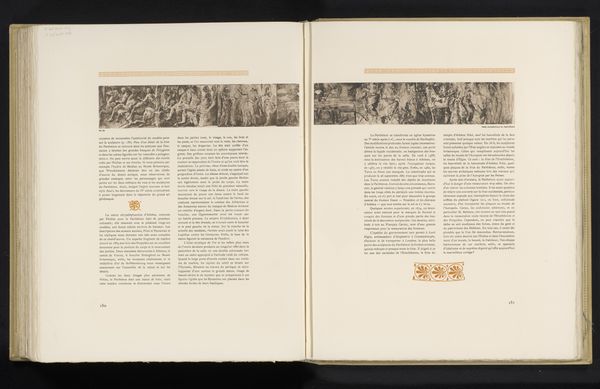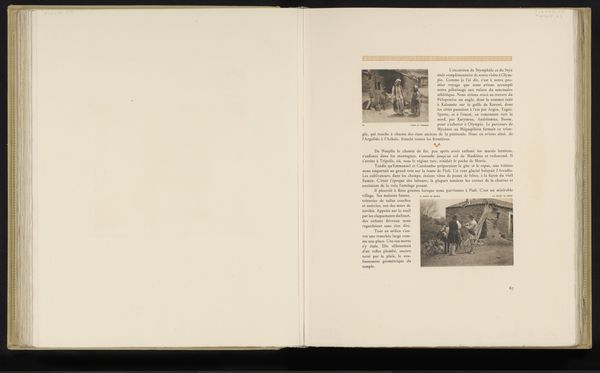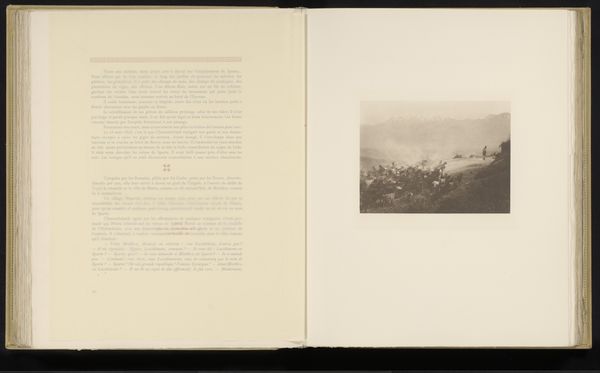
print, photography
# print
#
greek-and-roman-art
#
landscape
#
photography
Dimensions: height 100 mm, width 225 mm
Copyright: Rijks Museum: Open Domain
Curator: Here we have a photogravure titled “Gezicht op de Propyleeën, gezien vanaf het Erechtheion,” or "View of the Propylaea, seen from the Erechtheion," made before 1910 by Fréderic Boissonnas. Editor: The weight of the ancient stone practically jumps off the page. Look at the textures! You can almost feel the wind scouring those columns. Curator: Indeed. Boissonnas's choice of the photogravure process really enhances the gravitas of the subject. The Propylaea, as the monumental gateway to the Acropolis, had immense symbolic power in its time. Editor: And even in its ruined state, presented here, you can still discern that intentional effect. Look at how the sky presses down, how the city spreads below the monument. It conveys not only scale but a distinct physical dominance. Curator: Right. We also see a certain romantic ideal here, too. Boissonnas wasn’t simply recording a landmark; he was participating in the broader European fascination with ancient Greece. He made several photographic journeys in the region. Editor: I'm struck by the sheer labor involved in making a print like this. Think of the journey to Athens, setting up the shot, and the meticulous steps in the darkroom to translate that photographic negative into the textures we see on this page. Curator: Absolutely, and consider the layers of representation, right? Boissonnas's print circulated as a mass-produced item, further shaping European understandings and sometimes misunderstandings of the classical world. Editor: I appreciate thinking about the ways even photographic practices, supposedly ‘objective’ mediums, reinforce cultural viewpoints about the materials and histories that surround us. It is a beautiful reminder of how perspective and process make a photo much more than the object it depicts. Curator: Agreed, understanding the historical context certainly deepens our appreciation of Boissonnas' work, but viewing the monument in ruins like this, makes me think about the cyclical nature of power and time. Editor: Yes, these visual records ask us to examine the ways the stones and artifacts connect to and shape the worlds, past and present.
Comments
No comments
Be the first to comment and join the conversation on the ultimate creative platform.
